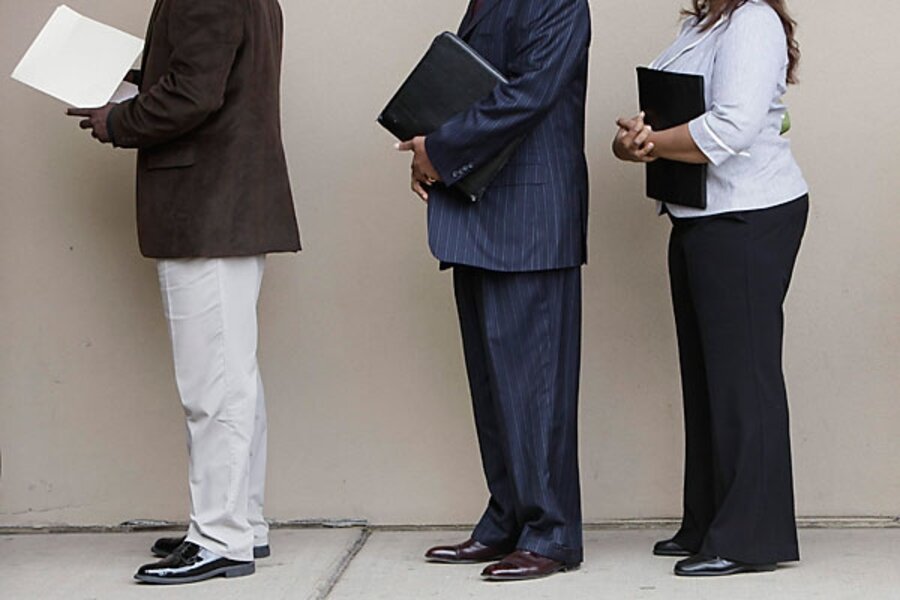5 percent unemployment: still a decade away?
Loading...
This could become the third time in a row that Americans struggle out of recession only to find themselves in a so-called "jobless recovery."
The phrase became popular back in the early 1990s, when a frigid post-recession job market paved the way for Bill Clinton to defeat incumbent George H. W. Bush in the 1992 presidential election.
Then the pattern was repeated after the 2001 recession, in a more pronounced way.
Despite a disappointing monthly jobs report Thursday, the good news is that economists generally expect the US economy to start growing again later this year. But the report, showing 9.5 percent unemployment in June, served as a reminder that the current environment for US workers is unusually tough.
"It will take a long time to bring that unemployment rate down," says Nigel Gault, an economist at IHS Global Insight in Lexington, Mass. "I think it will take years to bring it down to the sort of rate we got used to" in the late 1990s.
By years, he means perhaps a decade before we see a jobless rate of 5 percent. His forecast is that the unemployment rate will peak at 10.3 percent by the middle of next year, and then start to come down.
That outlook is a bit more pessimistic than the average of about 50 forecasters surveyed by Blue Chip Economic Indicators last month. Their consensus forecast is that joblessness will peak at 9.9 percent, edging down to 9.5 percent by the end of next year.
The jobless recovery in the early 1990s looks fairly mild in retrospect. The economy lost fewer than 2 million jobs in the recession. Those jobs were recovered within about 20 months as the jobless rate fell from a peak of 7.8 percent to 6 percent.
After the 2001 recession, the jobless rate hit 6.3 percent, but the recovery was even slower. It took four years to get back to the number of jobs the nation had as the recession began.
This time, the hill to climb looks more challenging than in either of those recessions. First, more jobs have been lost – more than 6 million. Second, it's a deeper global recession than before. And third, the nature of the recession is different. A historic boom in consumer credit has ended, and because of that it will take some time to the repair household finances and the banking system.
"We simply can’t have the same sort of consumer driven growth that we had in the past expansion," Mr. Gault says.
In the past decade, consumer spending surged as Americans borrowed more and home prices rose to unsustainable levels.
In the future, a more moderate level of consumer spending can help bring down unemployment, but Gault suggests that America will also have to boost its exports. To some extent, a recovery in jobs is dependent on how fast the rest of the world recovers – and how fast consumers in places like China and Brazil boost their demand for US products.
While a jobs recovery may take time, some signs of improvement are showing up. The 467,000 jobs lost in June signal that the pace of layoffs is slower than at the start of the year.





